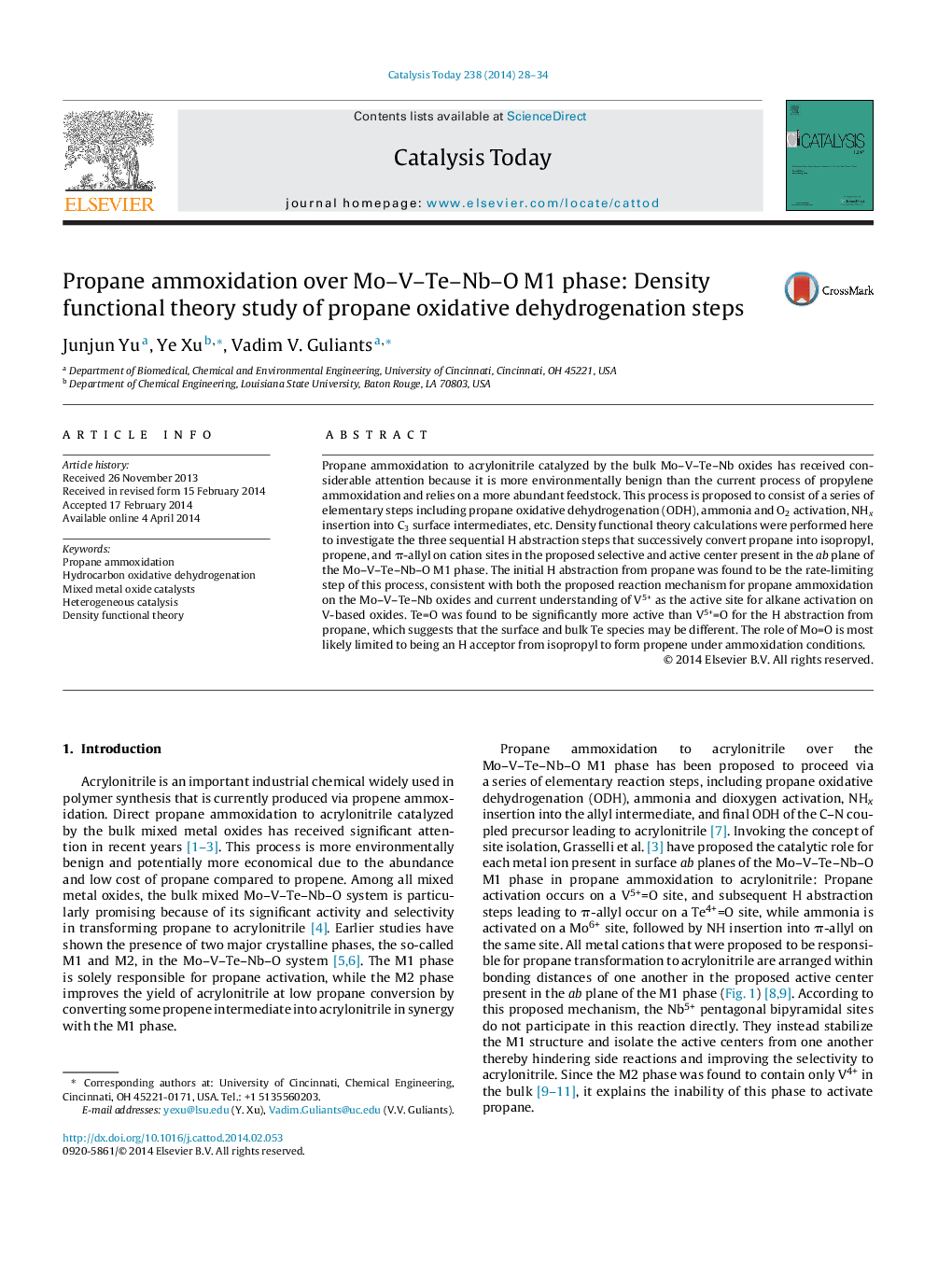| کد مقاله | کد نشریه | سال انتشار | مقاله انگلیسی | نسخه تمام متن |
|---|---|---|---|---|
| 54534 | 47013 | 2014 | 7 صفحه PDF | دانلود رایگان |

• Initial H abstraction from propane on V5+=O is the rate-limiting step in propane ODH on the ab plane of Mo–V–Te–Nb–O M1 phase.
• V5+=O is capable of activating propane and propene.
• Mo5+=O may be involved in propane ODH as an H acceptor from isopropyl.
• Activation barriers for H abstraction from propane and propene are linearly related to H adsorption energies on different metal oxo groups.
Propane ammoxidation to acrylonitrile catalyzed by the bulk Mo–V–Te–Nb oxides has received considerable attention because it is more environmentally benign than the current process of propylene ammoxidation and relies on a more abundant feedstock. This process is proposed to consist of a series of elementary steps including propane oxidative dehydrogenation (ODH), ammonia and O2 activation, NHx insertion into C3 surface intermediates, etc. Density functional theory calculations were performed here to investigate the three sequential H abstraction steps that successively convert propane into isopropyl, propene, and π-allyl on cation sites in the proposed selective and active center present in the ab plane of the Mo–V–Te–Nb–O M1 phase. The initial H abstraction from propane was found to be the rate-limiting step of this process, consistent with both the proposed reaction mechanism for propane ammoxidation on the Mo–V–Te–Nb oxides and current understanding of V5+ as the active site for alkane activation on V-based oxides. Te=O was found to be significantly more active than V5+=O for the H abstraction from propane, which suggests that the surface and bulk Te species may be different. The role of Mo=O is most likely limited to being an H acceptor from isopropyl to form propene under ammoxidation conditions.
Figure optionsDownload high-quality image (239 K)Download as PowerPoint slide
Journal: Catalysis Today - Volume 238, December 2014, Pages 28–34